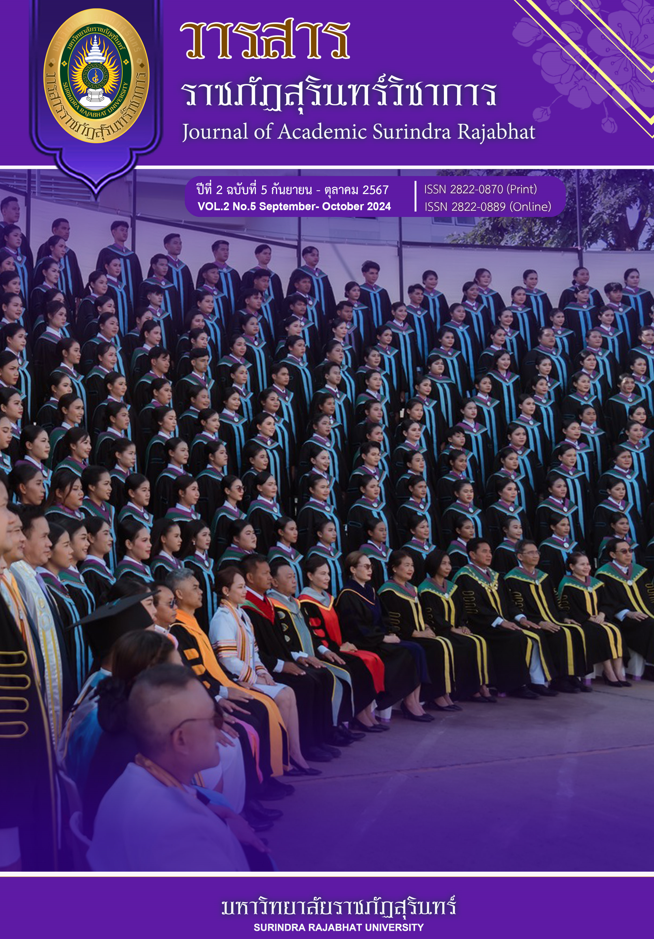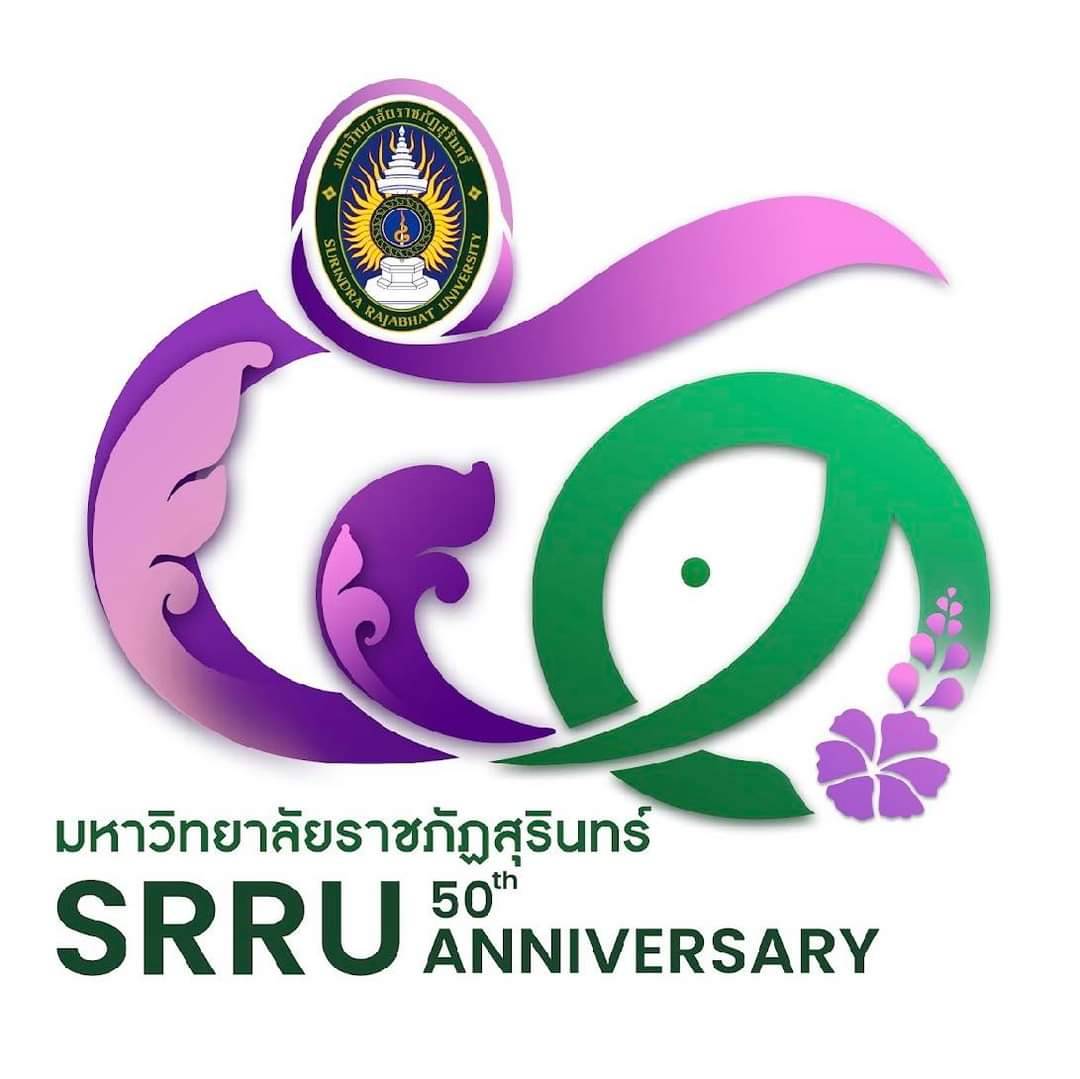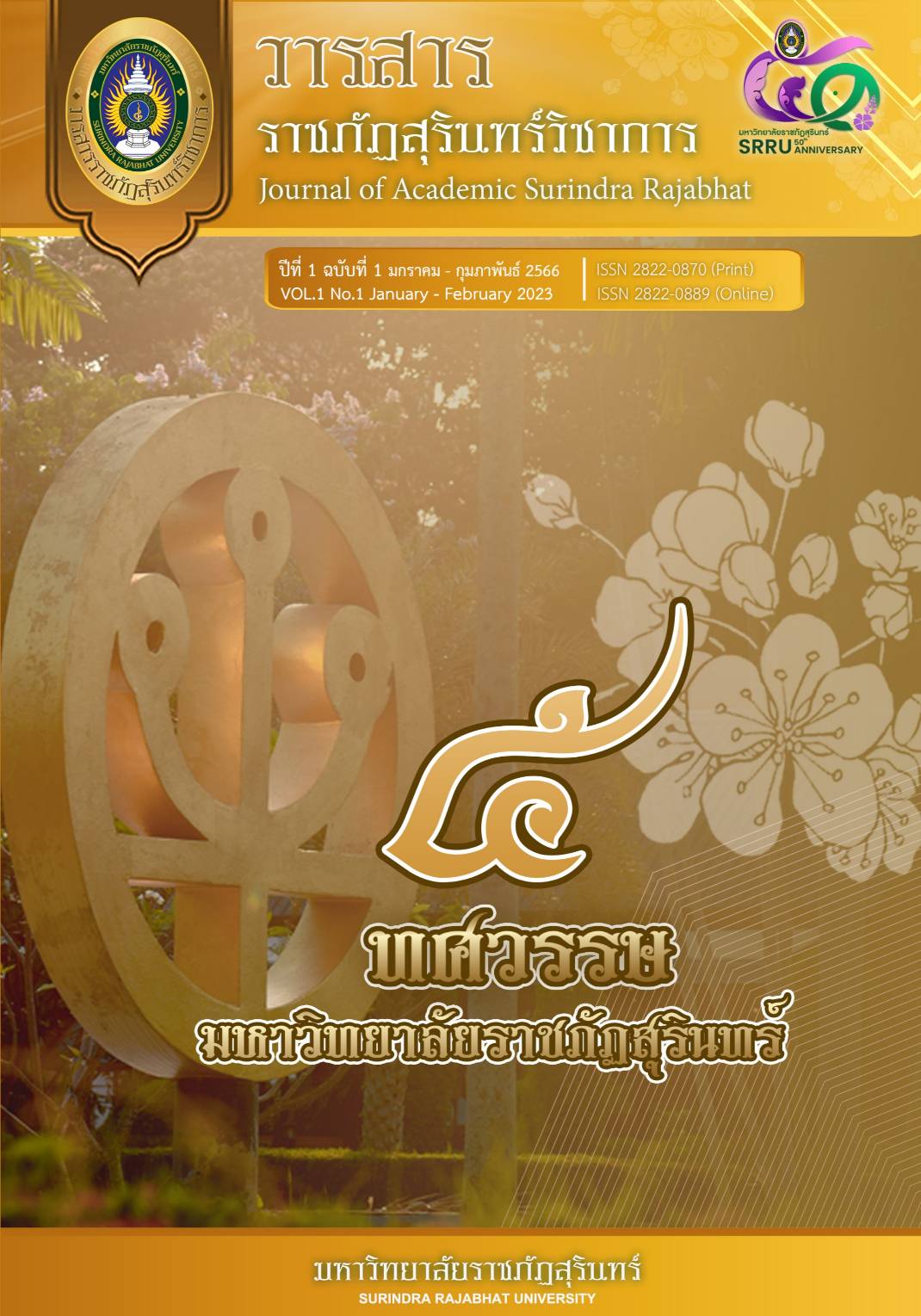The Direct, Indirect and Total Influences of Conflict People to Metropolitan Police Officer 4
DOI:
https://doi.org/10.14456/jasrru.2024.30Keywords:
Conflict, Influence, Metropolitan Police Officer 4, PeopleAbstract
In general, the performance of police officers in providing public service may cause conflicts from a variety of factors, police must choose an approach that is appropriate to that factor in order to reduce or eliminate conflict. This Article aimed to study (1) People's satisfaction with avoiding, compliance, integrating, dominating, compromising and conflict (2) The direct, indirect and total influence of avoiding compliance dominating compromising and integrating affecting to conflict. This study was conducted by quantitative approach, questionnaire was used to collect data 120 from people in the eastern Bangkok area who used the services and interacted with Metropolitan Police Officer 4 at the police station. The research instrument used questionnaire, Statistics used in the analysis include descriptive statistics such as minimum value, maximum value, mean, standard deviation, skewness, kurtosis and path analysis.
The results indicated that (1) Most of the people were quite satisfied with the method of compliance (𝑥̅= 3.47 from full score 5 / S.D. = 0.57) and compromising (𝑥̅ = 3.56 / S.D. = 0.58) use it as guideline for resolving conflicts and not satisfied with the dominating to reduce conflicts. (𝑥̅= 2.44 / S.D. = 0.14) (2) Dominating had the most direct influences with conflict (ß = .877) and Compromising had the most indirect (ß = 1.558) and total (ß = 2.426) influences with conflict. Police officers who serve the public at police stations must use their powers according to their roles and responsibilities but not to exceed the limits during the provision of public services, Must strictly comply with the rules, regulations and regulations of the police. In the event of a conflict with the public The police must choose a compromise method to reduce or eliminate the conflict.
Downloads
References
ธนัสถา โรจนตระกูล. (2562). การจัดการความขัดแย้งเชิงสร้างสรรค์. วารสารวิชาการคณะมนุษยศาสตร์และสังคมศาสตร์. 6(2) : 14-27.
ประกาศสำนักงานตำรวจแห่งชาติเรื่อง การกำหนดหน่วยงานและเขตอำนาจการรับผิดชอบหรือเขตพื้นที่การปกครองของส่วนราชการ (ฉบับที่ 29) พ.ศ.2563. (2563). ราชกิจจานุเบกษา. เล่มที่ 177 ตอนพิเศษ 205 ง. หน้า 151-162.
ศรีเสด็จ กองแกน. (2566). การจัดการความขัดแย้ง. วารสารส่งเสริมและพัฒนาวิชาการสมัยใหม่. 1(2) : 36-49.
สิญาธร นาคพิน และวิลาวัณย์ สมบูรณ์. (2562). การบริหารความขัดแย้งในองค์กรภาครัฐยุคประเทศไทย 4.0. วารสารราชภัฏสุราษฎร์ธานี. 6(2) : 21-47.
สีดา สนศรี. (2564). การจัดการความขัดแย้ง: ความเข้าใจพื้นฐานและกรณีศึกษา. วารสารการเมืองและการปกครอง. 11(2) : 245-256.
สำนักงานตำรวจแห่งชาติ. (2566). แผนปฏิบัติราชการสำนักงานตำรวจแห่งชาติราย 5 ปี พ.ศ. 2566 -2570. กรุงเทพ: โรงพิมพ์ตำรวจ.
สำนักงานปกครองและทะเบียน สำนักปลัดกรุงเทพมหานคร. (2566). การแบ่งพื้นที่เขตการปกครองของกรุงเทพมหานคร. [ออนไลน์]. เข้าถึงได้จาก : https://office2.bangkok.go .th/ard/?Page_id=4048. สืบค้น 26 ธันวาคม 2566.
สำนักงานยุทธศาสตร์ตำรวจ. (2566). สรุปผลการประเมินการปฏิบัติงานของข้าราชการตำรวจปีงบประมาณ 2565. กรุงเทพฯ: โรงพิมพ์ตำรวจ.
อาภาสิริ สุวรรณานนท์ และฉัตรชัย มหาคีตา. (2562). การประเมินประสิทธิผลของสถานีตำรวจและความเชื่อมั่นของประชาชนในการปฏิบัติการตำรวจปี 2560. วารสารการเมือง การบริหารและกฎหมาย. 11(3) : 159-181
อภิณะฎา ใสไหม พระปราโมทย์ วาทโกวิโท และอดุลย์ ขันทอง. (2566). รูปแบบการพัฒนาผู้ประนีประนอมในคดีอาญาต้นแบบโดยพุทธสันติวิธี. วารสารสันติศึกษาปริทรรศน์ มจร. 11(3) : 1160-1172.
เอื้องฟ้า เขากลม เจนจิรา จันทร์อินทร์ และศิริรักษ์ ยกเส้ง. (2566). การจัดการความขัดแย้งของบุคลากร องค์การบริหารส่วนจังหวัดนครศรีธรรมราช. วารสารสักทอง. 29(1) : 137-146.
Harris, J.E. (2022). Application of Path Analysis and Structural Equation Modeling in Nutrition and Dietetics. Journal of the Academy of Nutrition and Dietetics. 121(11) : 154-168.
Hilaire, J.S. (2023). Managing Policy and Reform in an Era of American Police Conflict Who Will Guard the Guardians?. New York, NY.
Kundi, Y.M., Badar, K., Sarfraz, M., & Ashraf, N. (2023). Interpersonal conflict as a barrier to task performance: the mediating role of workplace deviance and the moderating role of emotional intelligence. International Journal of Conflict Management. 34(1) : 67-80.
Liao, Q., & Pandeli, J. (2023). When workplace humour turns into conflict: exploring HR practices in the case of conflict management, Employee Relations. 45(5) : 1275-1298.
Modise, M.J. (2023). Realizing the goals of law and order, Police authority and increasing police professionalism. International Journal of Innovative Science and Research Technology. 5(3) : 2389-2391.
Nyimbili, F., & Nyimbili, L. (2024). Types of Purposive Sampling Techniques with Their Examples and Application in Qualitative Research Studies. British Journal of Multidisciplinary and Advanced Studies. 5(1) : 90-99.
Owsiak, A., Diehl, P.F., & Goertz, G. (2023). Managing complexity: addressing the civil conflict component of international-civil militarized conflicts (I-CMCs). International Journal of Conflict Management. 35(1) : 192-214.
Özden, M. (2023). Active participation or legal obligation? A qualitative study of the effectiveness of participatory methods designed for local participation. Quality & Quantity. 58 : 559–580.
Roebianto, A., Savitri, L., Sriyanto, A.S., & Syaiful, L.A. (2023). Content validity: Definition and procedure of content validation in psychological research. TPM – Testing. 30(1) : 5-18.
Shahzadi, S., & Sallah, M. (2023). Relationship between conflict types and conflict management strategies during online teaching: A co-relational study. Journal of Development and Social Sciences. 4(3) : 403–411.
U.S. Department of Health and Human Services. (2022). The Belmont Report: Ethical Principles and Guidelines for the Protection of Human Subjects of Research. [Online]. Available : https://www.hhs.gov/ohrp/regulations-and-pol icy/belmont-report/index.html. Retrieved 27 December 2023.
Downloads
Published
How to Cite
Issue
Section
Categories
License
Copyright (c) 2024 Journal of Academic Surindra Rajabhat

This work is licensed under a Creative Commons Attribution-NonCommercial-NoDerivatives 4.0 International License.










